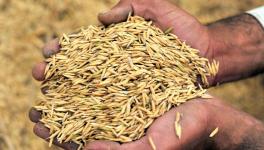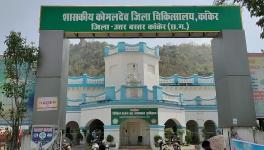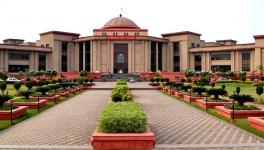Chhattisgarh: Incomplete, Incompetent Strategy is Making Tackling Sickle Cell Disease Difficult
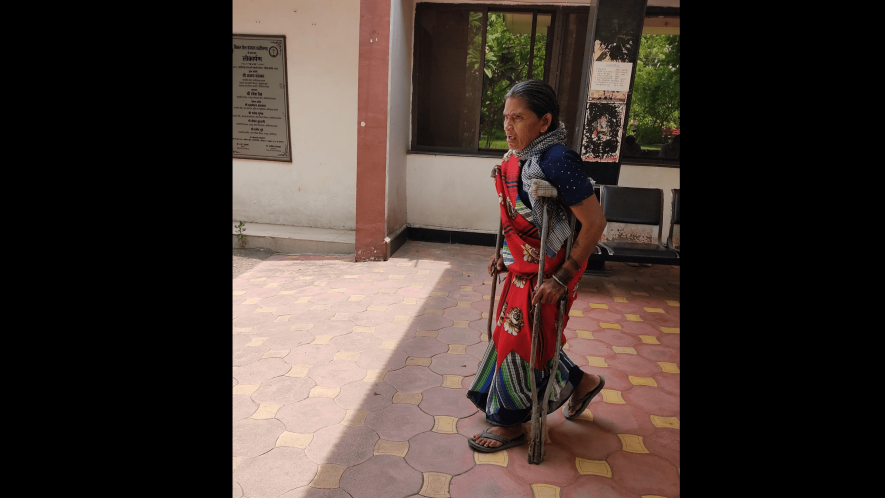
Malti Devi, a Sickle Cell disease patient
Malti Devi (50) was seen limping with one leg, when she reached Sickle Cell Institute Chhattisgarh (SCIC) in Raipur to receive treatment for her anaemic condition. Riding on high hopes, Malti was punctual on time to undergo a test as prescribed in the previous visit. But on arrival, the High Performance Liquid Chromatography (HPLC) instrument was found out of order. HPLC is done to analyse the state of haemoglobin in the body that diagnoses the individual's condition.
Malti was left empty-handed as the visit was not fruitful in terms of treatment. On being asked about the visit, Malti said, "I have come to Raipur covering hundreds of kilometres from Bilaspur for treatment of 'Sicklin Piliya' (the disease pronounced in local dialect as the body becomes weak and yellowish), but I need to wait for a few more days due to unavailability of some test."
Consequently, the non-functional equipment of the institute blew the lid off the uncomfortable facts that surround its fate. The officials inside the premises remained clueless about the repair deadline of the crucial HPLC test machine. Many like Malti have to return back with uncertainty.
In Sickle Cell Disease (SCD), the haemoglobin gets damaged (a protein in the red blood cells), affecting their capacity to carry oxygen, and patients can suffer from anaemia, jaundice, body pain, and pneumonia and repeated infections that may result in paralysis.
The Indian Journal of Medical Research (IJMR) research said that the tribal populations in central India are particularly susceptible to SCD because of certain genetic conditions common to them. Poverty, livelihood in remote areas and no access to advanced scientific methods make SCD more prevalent among tribals, and unreachable treatment keeps the tribal populace vulnerable.
INCOMPLETE AND INCOMPETENT INFRASTRUCTURE
The website of Sickle Cell Institute, with a glossy, active outlook, shows the positive examples of individuals who have beaten the deadly disease-laden with government announcements. But the ground reality appears depressing.
As per inputs from the Sickle Cell Institute, the state's 10% population, i.e. approx 25 lakh people, are affected by the deadly disease. On average, the institute receives nearly 100 patients every day who get free medicine, tests and treatment while testing facilities stand dysfunctional, causing delays in treatment. But unfortunately, the institute could not provide the district-wise data of sickle cell patients.
The Chhattisgarh government, in 2013, launched a program to counter the menace of Sickle cell and came up with the Sickle Cell Institute'. On World Sickle Day program, June 19 2019, a year after assuming power in the state, Chief Minister Bhupesh Baghel announced that the Sickle cell institute of Health department would be developed as a 'Centre of Excellence' with facilities of Stem Cell Research, Blood transfusion and Hemoglobinopathy (a hereditary condition involving an abnormality in the structure of haemoglobin).
As per local news reports, in December 2020, Chhattisgarh's Health Minister, TS Deo Singh, detailed the project and said, "Raipur would soon get India's first sickle cell dedicated hospital. The approval for establishing a 'Centre of Excellence is done, and procedures required to achieve the target have begun. Apart from Raipur, all district government hospitals would have a dedicated unit for sickle cell patients."
The first sickle cell dedicated hospital was approved at the cost of Rs. 52.23 crores and would come up in 3 acres which would have had a 30-bed hall for patients advanced research centre for research and experiments. Besides Raipur, other districts and bordering states of Madhya Pradesh, Odisha, Jharkhand, etc., were also on the target list to have a well equipped sickle cell unit, but all remained in the cold storage.
The health department in 2017 did come up with a detailed map of the prevalence of the disease in Chhattisgarh, but the fight against it remains stymied.
CORRUPTION ECLIPSES SICKLE CELL INSTITUTE
Chhattisgarh, besides combating the internal security threat from Maoists, is struggling to put up a fight against the deadly disease of Sickle Cell Anaemia. The Sickle Cell Institute in Raipur stands choked by corrupt activities. In recent months, financial irregularities have allegedly taken place. As per local newspaper Nayi Duniya's report, irregularities worth crores have come to fray.
An official of SCIC, on condition of anonymity, revealed that in the month of February 2022, the alleged purchase of tablets such as Multivitamins and Omeprazole were made at a higher rate than that of the market price. After the exposure, tablets were sold with blackened MRP. The institute director Dr PK Patra did not take action over the reported case, and subsequently, in the month of May, again, a financial irregularity worth 1.15 crore erupted. This time it includes - the purchase of medical instruments, furniture, lab equipment, computers and maintenance of the institute building, garden and electric gadgets like AC.
The repeated calls for inputs from the director of the institute Dr PK Patra went unanswered.
The official further added, “Since inception, the idea of making it both a research base (so as to have surveillance of the disease) and hospital (to impart quality treatment) were never achieved. Patients come here with the hope of a permanent cure, but its ill-equipped capacity is the biggest hindrance.”
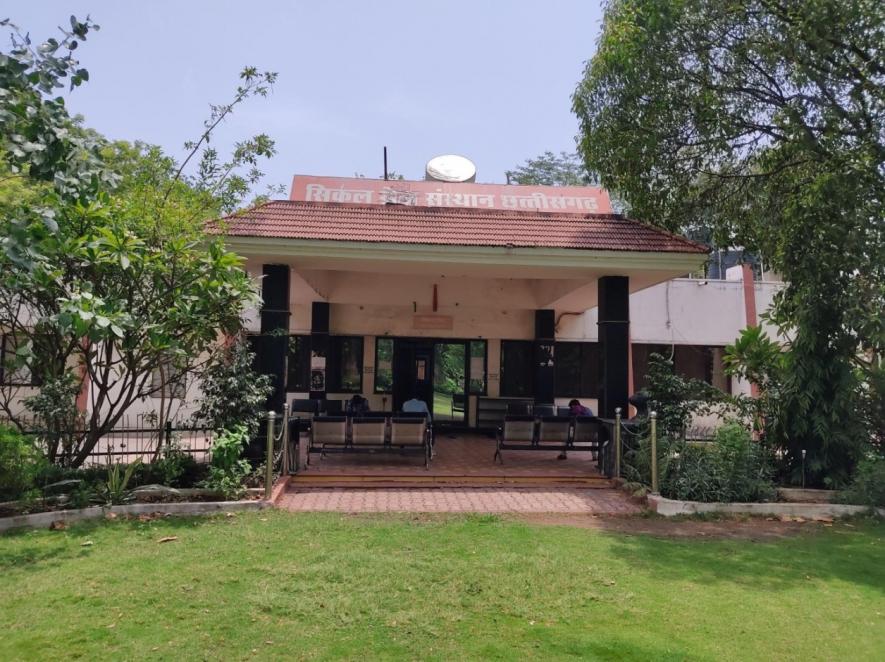
Sickle Cell Institute, Raipur, Chhattisgarh
Being a neglected health problem, the overall research on sickle cell disease (SCD) has also been scarce in India. Chhattisgarh was assumed to have played a constructive role against a health menace, but many in the state remain annoyed with no action against the endemic.
Rajesh Tripathi, a 52-year-old social activist who works with sickle cell patients in the Raigarh district, is highly sceptical of the government's intent to save millions from sickle cell anaemia. Rajesh told NewsClick, "There are hundreds of sickle cell affected patients in Raigarh devoid of facilities to cure the disease. They need to look 250 km away from their home to Raipur for treatment. It's a callous approach of the government just to announce projects and hospitals and implement nothing for the needy population. There was just a regime change; the ignorance persists as before."
A 2017 report of the government-run State Health Resource Centre, Raipur, said that 20% of one tribe, the Gond tribe, suffers from the disease. As per Dr AR Dalla, an expert on Sickle Cell disease, Chhattisgarh witnessed 10,000 children die due to sickle cell.
“The efforts so far have remained restricted to research and academic pursuit rather than countering the problem at the grassroots level, beginning from the primary health centre onward to district hospitals.”
The writer is a freelance journalist.
Get the latest reports & analysis with people's perspective on Protests, movements & deep analytical videos, discussions of the current affairs in your Telegram app. Subscribe to NewsClick's Telegram channel & get Real-Time updates on stories, as they get published on our website.










